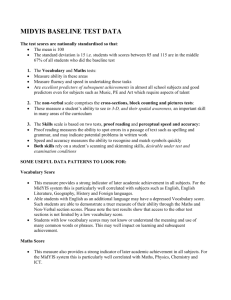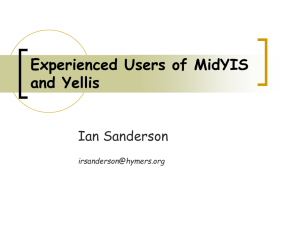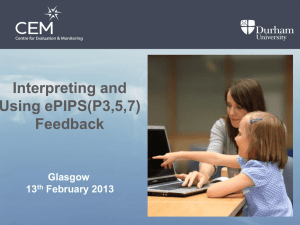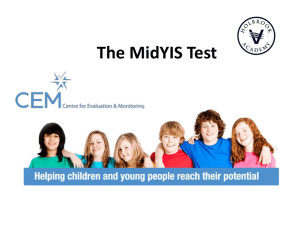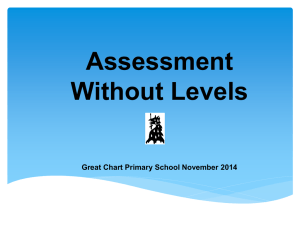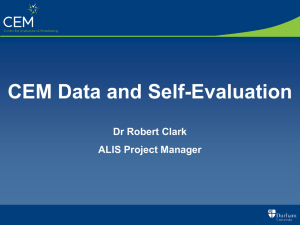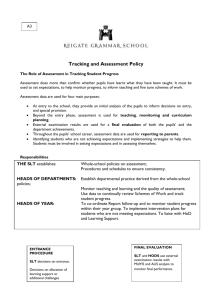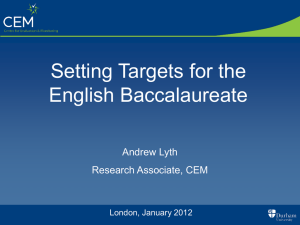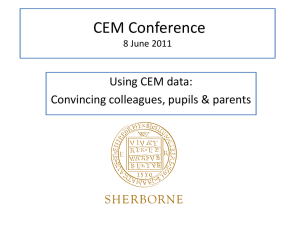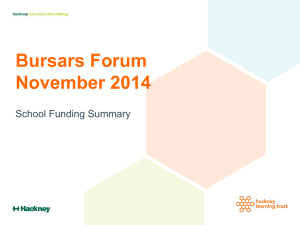Interpreting MidYIS Data
advertisement
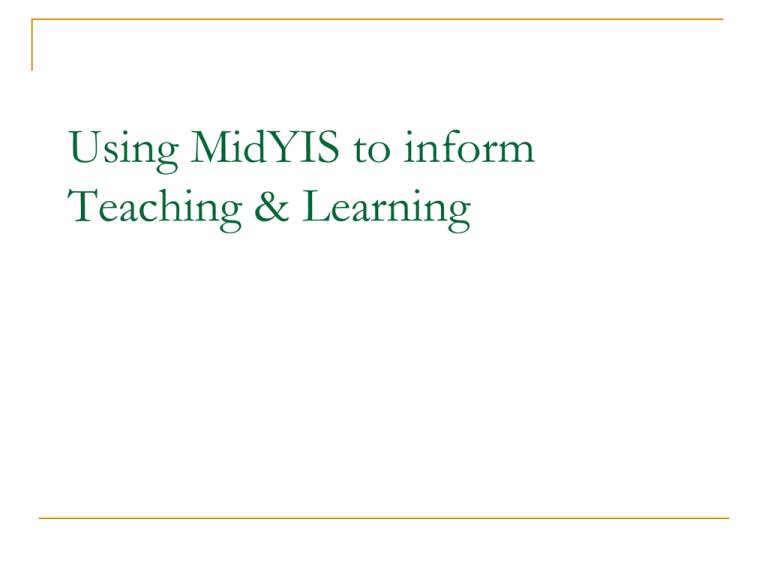
Using MidYIS to inform Teaching & Learning Objectives to gain understanding of reading MidYIS graphs to share strategies for supporting individual pupils Ideas for sharing MidYIS data with colleagues. What does MidYIS test? Vocabulary Maths Measures speed and fluency rather than knowledge Non-verbal Most culturally linked Tests 3D visualisation, spatial aptitude, pattern recognition and logical thinking Skills Tests proof reading skills (SPG) and perceptual speed and awareness (e.g. matching symbols under time pressure). Measures fluency and speed necessary in exams and in the work place. Explaining the Graph Nationally standardised Mean value: 100 Each MidYIS band contains 25% i.e. Top 25% are A, next 25% are B etc. 95% confidence within error bars. Interpreting the Graph Significantly high or low: no overlap with the mean score (100) 95% of pupils score between 70 and 130. Over 130 (only 2.5% of pupils) are gifted and talented. Below 85 may suggest SEN. Significant difference: no overlap between the error bars Overall MidYIS score is best predictor of KS3 and GCSE grades Interpreting the Graph cont. Even profiles (i.e overlapping error bars in all four sections, and overlapping with their MidYIS score) Uneven profiles (i.e. Pupils who have a significant difference between their four scores) Examples of Individual Pupil Profiles For each example: the information contained in the graph the issues which may arise for this pupil in your subject strategies you could employ to support that pupil (either for the whole class or for that specific individual) Student A Strategies Word banks for each topic Practice writing with words rather than symbols e.g. To find the common denominator, first of all you ... Discussion groups (although ensure pupils with low vocabulary scores do not all congregate) Wider reading Visits/trips etc to enrich language and cultural experience Student B Strategies May struggle to understand diagrams – use spoken and written explanations, paired work or group work to interpret. THINKING SKILLS Physical/practical/kinesthetic explanations may help (e.g. modelling solar system with clay/string or demonstrate distance between planets on football pitch etc) Use drama/active methods to demonstrate difficult concepts Student C Strategies Pupil may seem more able than is the case, e.g. ‘talks a good talk’. Allow paired work or group discussion to communicate answers orally Describe maths problems Encourage leadership roles as well as debates/T&L/drama Support with scaffolding/writing frames etc Student D Analysis A pupil like this may: struggle to proof read his work, therefore achieve a lower grade than he seems capable of. struggle to interpret or understand exam questions either work slowly with more accuracy OR work quickly with less accuracy – result is similar ie lower test score than expected Strategies: allow extra time practice timing e.g. clock on IWB use a range of question words to develop ability to understand instructions Develop proof reading technique eg spotting common errors consider further testing for dyslexia Student E Strategies In all lessons – not just English!!! Students need to improve their Literacy Skills Students need to be able to engage in lessons despite their Literacy difficulties. Sharing with Colleagues SEN Now the predictions Monitoring Progress
